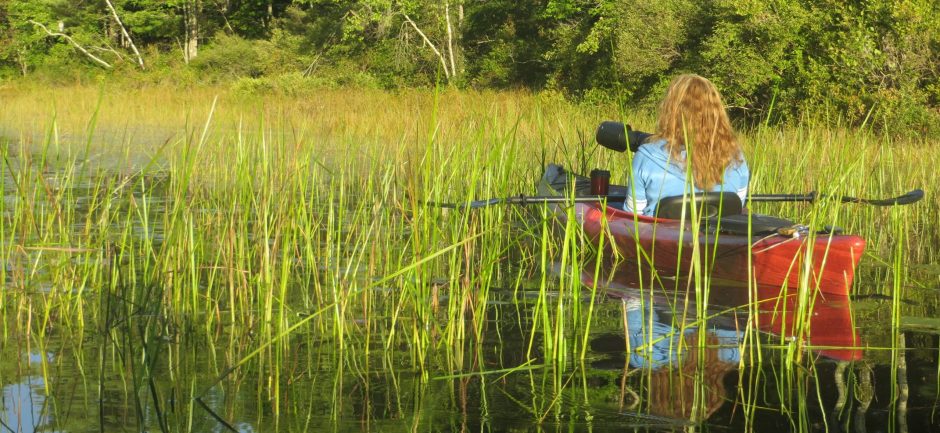Setting up a backyard bird watching station can be a lot of fun and very rewarding! It’s easy to do, too! Now is a very good time to start, as birds who flew south for the winter, are about to return.
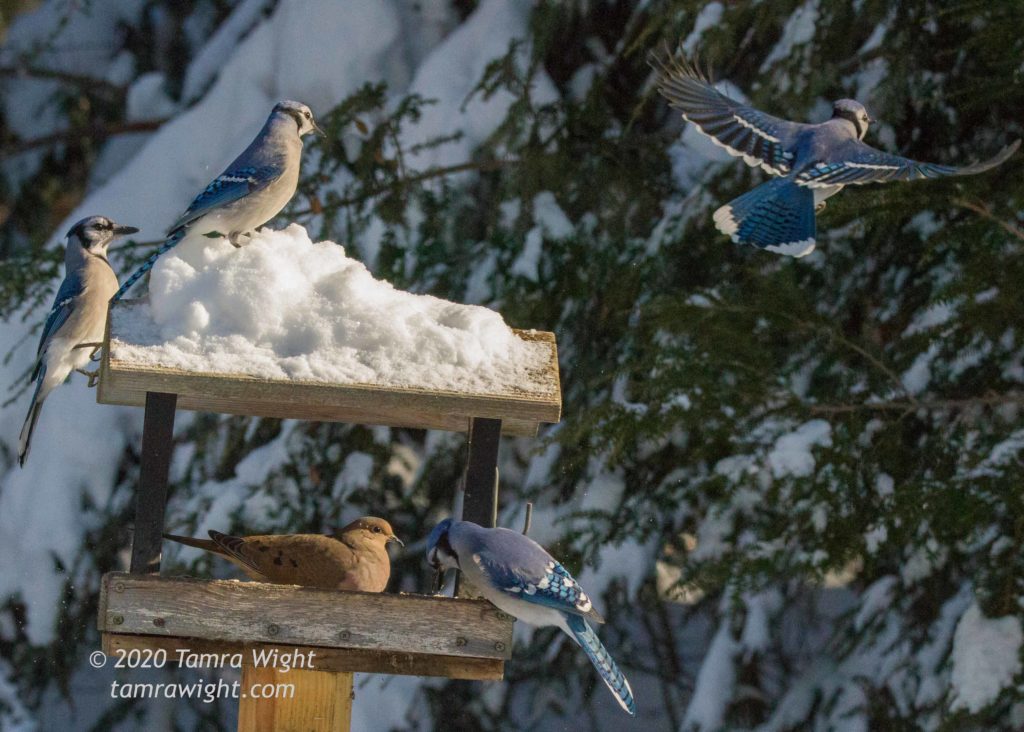
Food and water are two of the must-haves to attract birds to your backyard. When people think of bird food, they think of bags of seed. This can be found at your local hardware or feed store. Try to find a mix that appeals to many types of birds. Seeds on the ground will attract mourning doves, turkeys, juncos and more. Other birds like to take their seeds from a higher perch, so I try to put seeds both high and low.
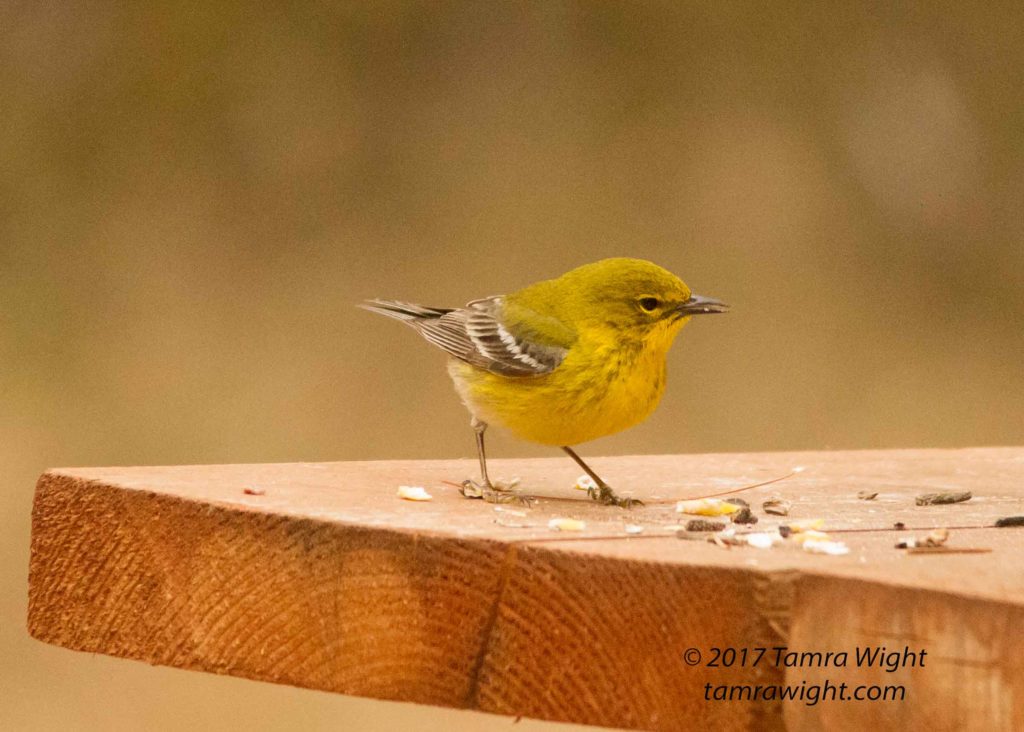
If you don’t have a bird feeder to hang, you can put some seeds out on the edge of a picnic table. Or try one of these do-it-yourself bird feeder projects from the Audubon.
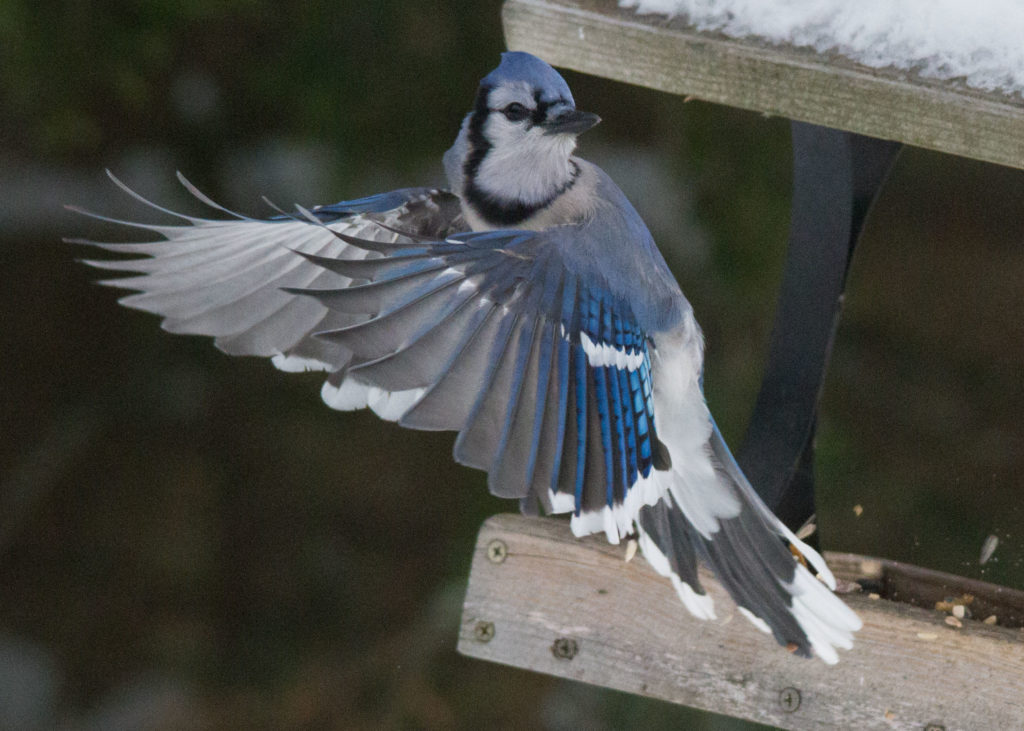
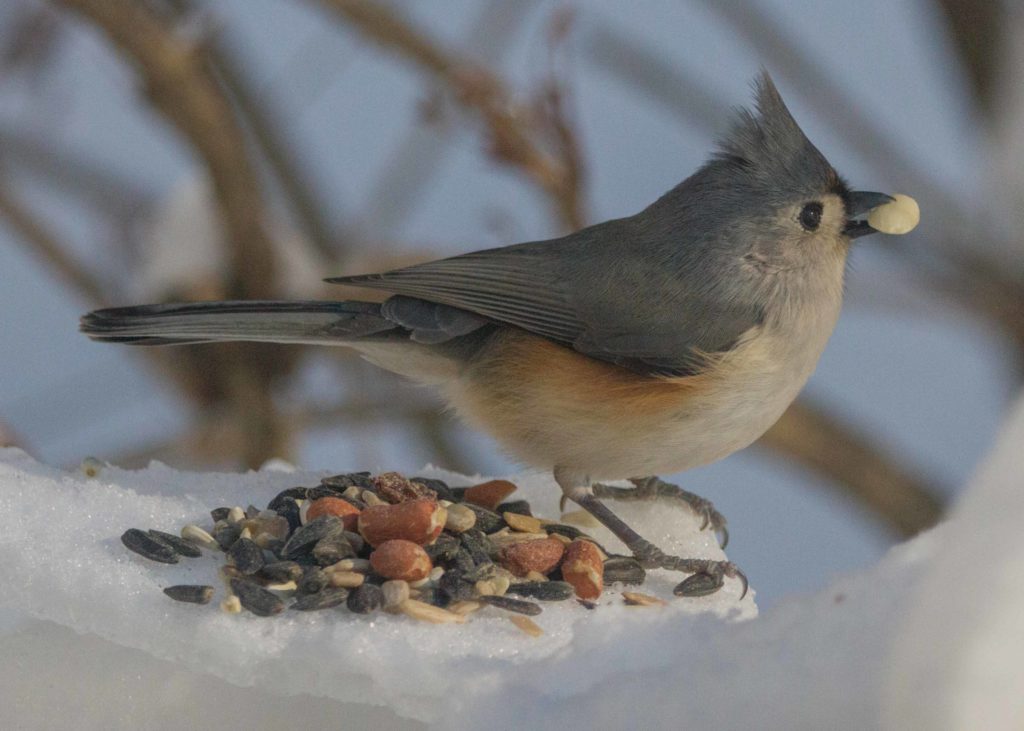
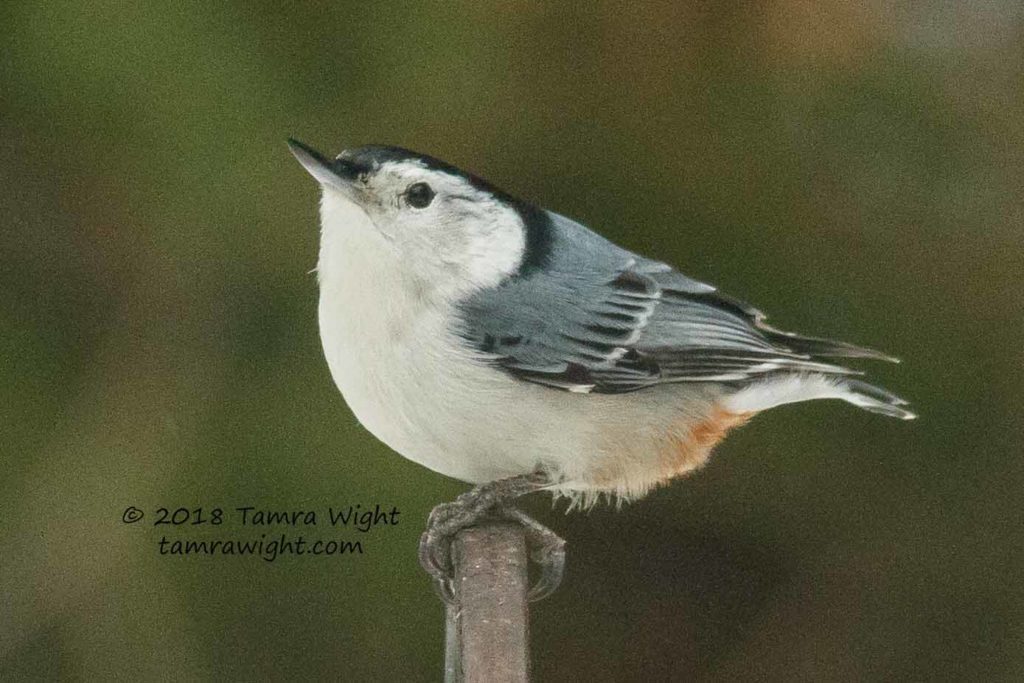
Not able to get out and buy some birdseed? Or perhaps you’d like to put out a variety of food to attract more birds? Try these every day food items from your kitchen. Just be sure to check the food daily, and if it starts to go bad, remove it as it could make the birds sick.
Many birds are attracted to raisins, including bluebirds, cardinals, orioles and cedar waxwings. Soak the raisins in warm water first to soften them up.
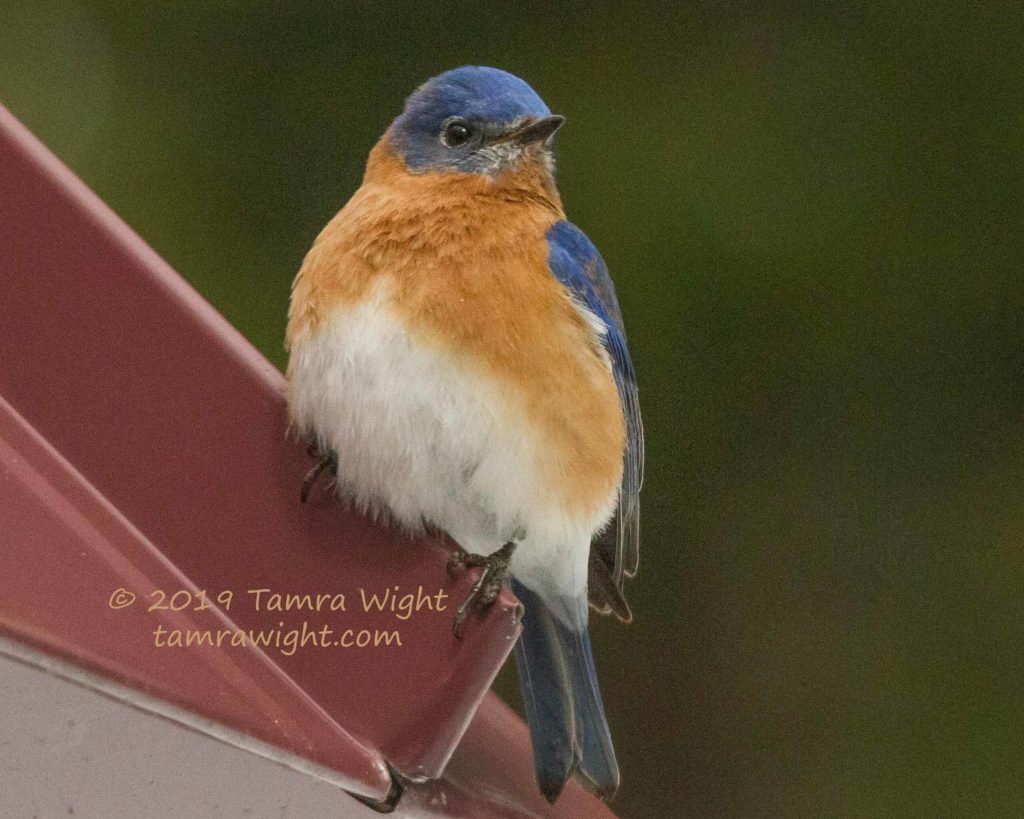
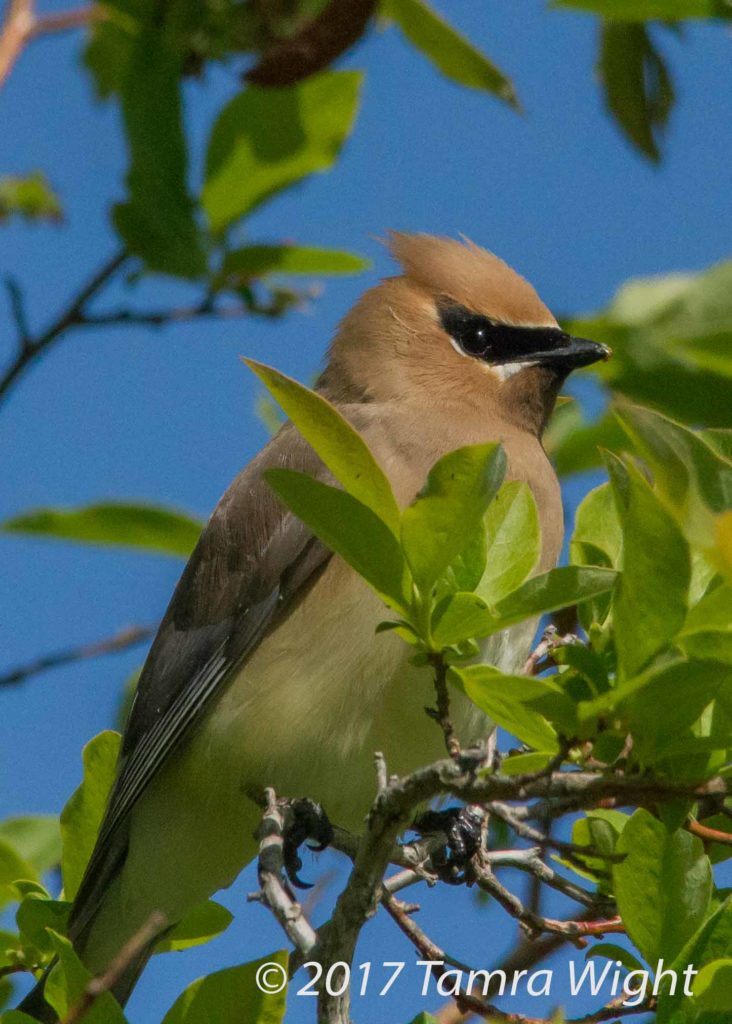
Here in Maine, I put out oranges in May to attract Baltimore Orioles, one of my favorite birds. Many of my friends put out a quarter cup of grape jelly for their orioles. You can use a tiny dish or an empty orange peel.
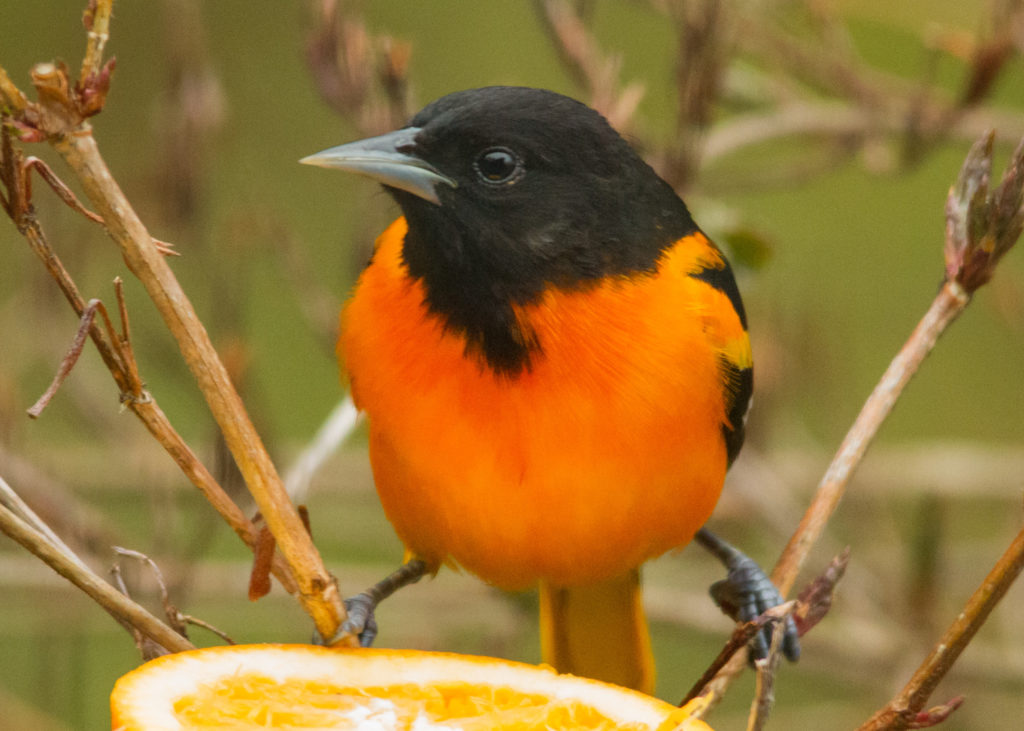
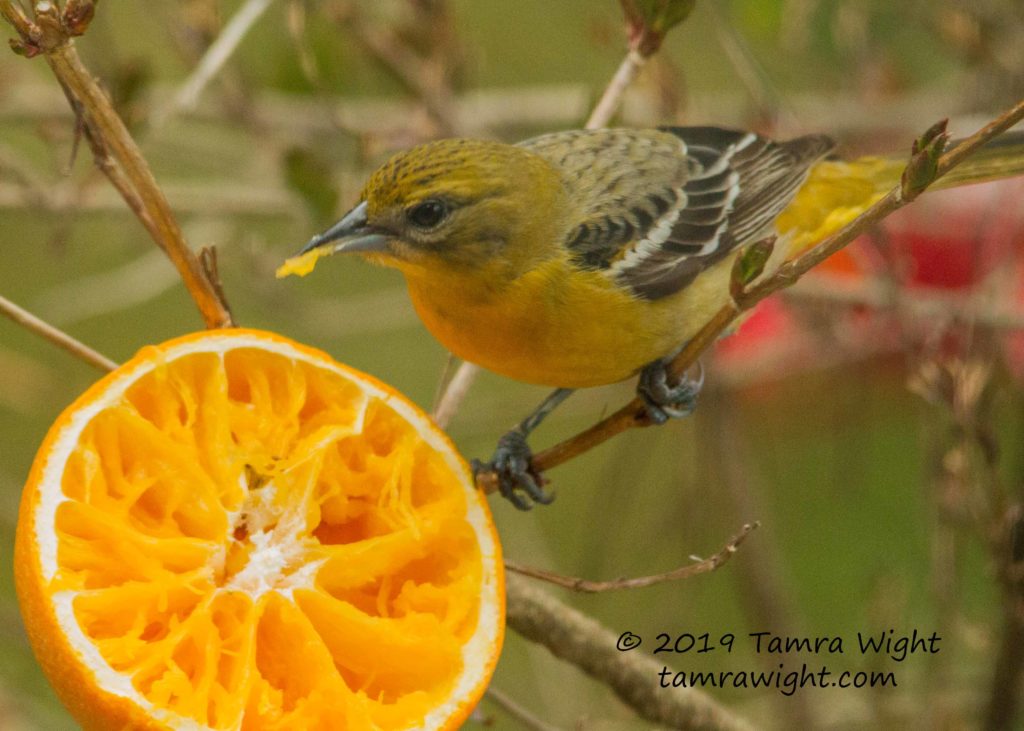
Last year, I was quite surprised when a new-to-me bird suddenly appeared at my orange feeding station! A black-rumped warbler! Such a funny name for a serious looking bird. I really enjoyed watching them.
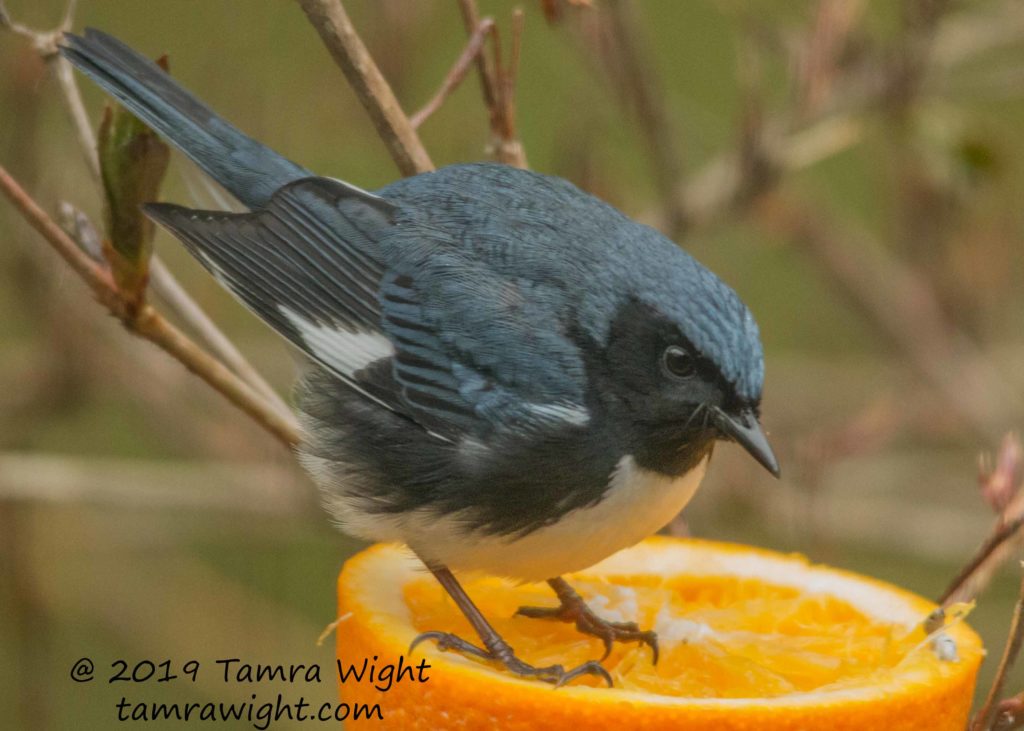
Have a banana? Peel it, cut it the long way and put just a half of a half out on a raised feeding spot to start. Cardinals, Catbirds and Scarlet Tanagers like banana in their diet.
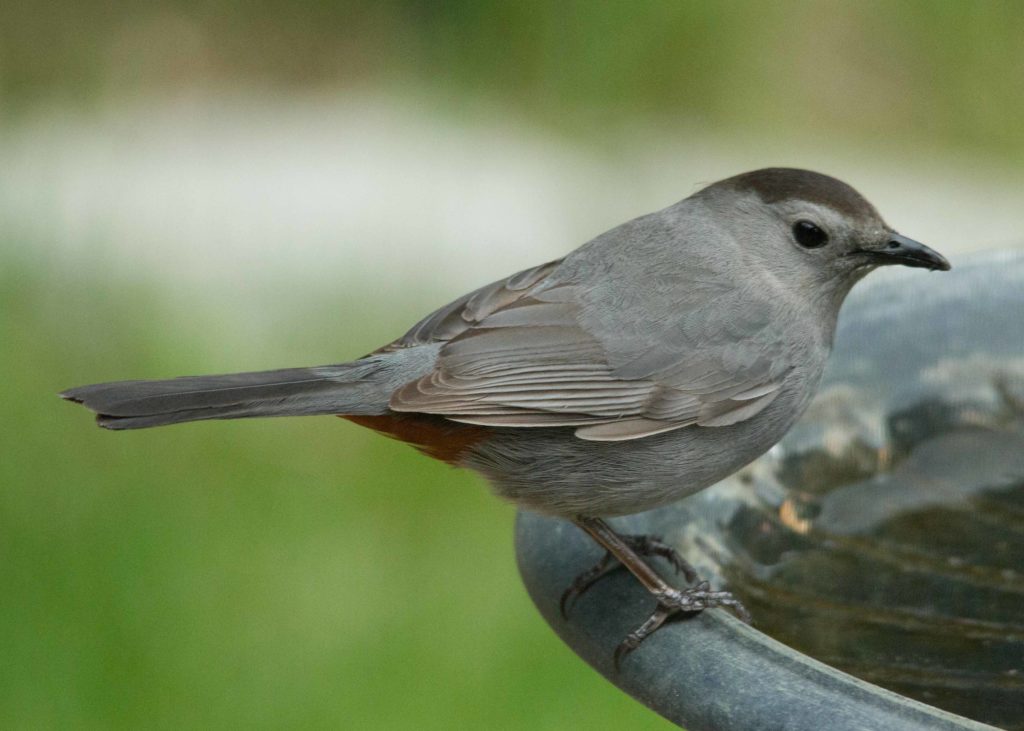
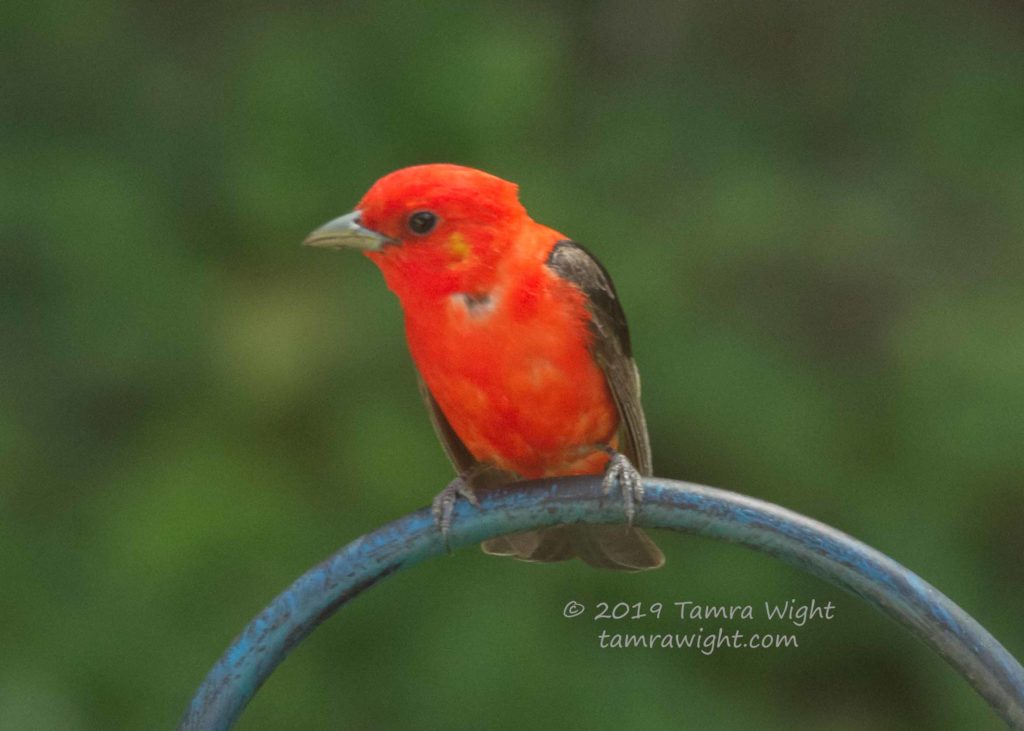
backyard for a bit of banana
You can also attract birds with fresh water. Birds use water to drink, stay cool, and to groom themselves.
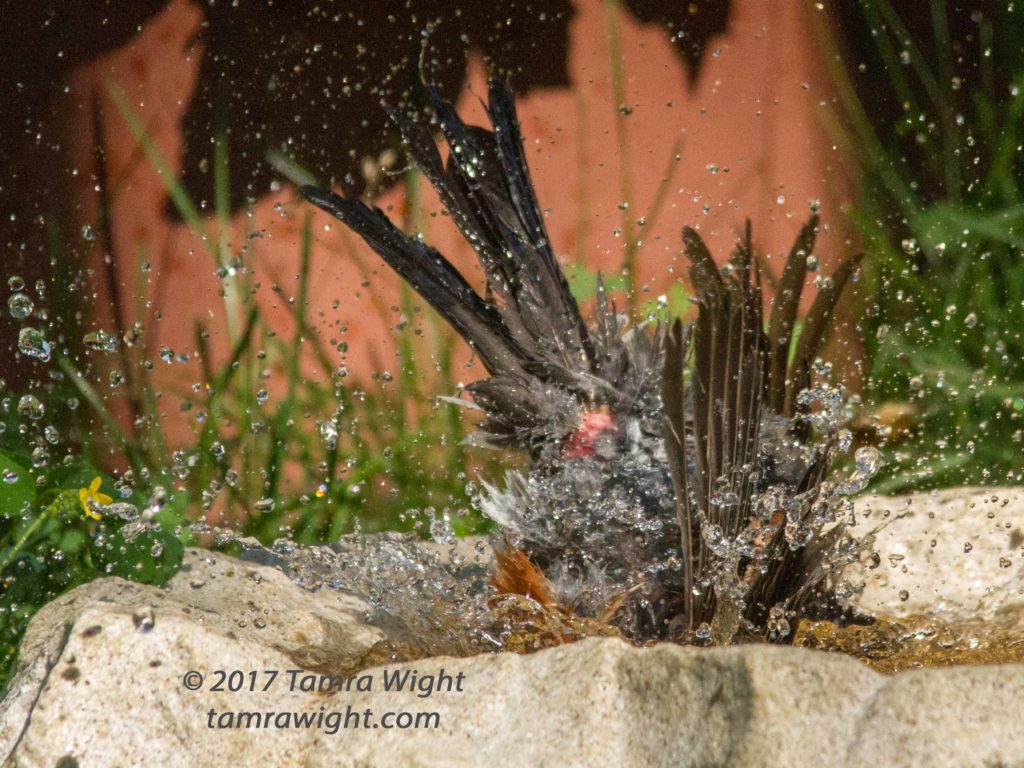
Bird baths can be easily made from a shallow pan about 2 inches deep, like an old cake pan (don’t take Mom’s new one!) or a trash can lid. Flower pot trays, the kind that sit under a pot to collect the water, are also a great choice. The important thing is, you’ll need to clean it very well. Place your bath on a level surface. Be sure to change the water every other day. Clean water keeps the birds from getting sick. Put a few pebbles in the bottom of your bath, so the birds can judge how deep it is.
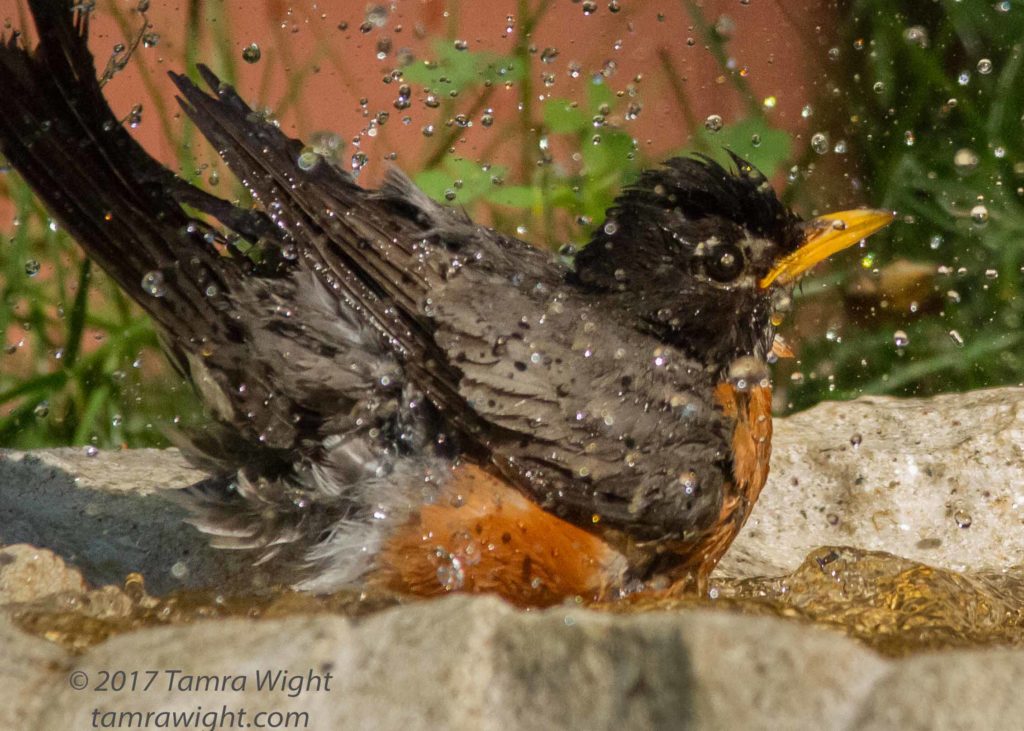
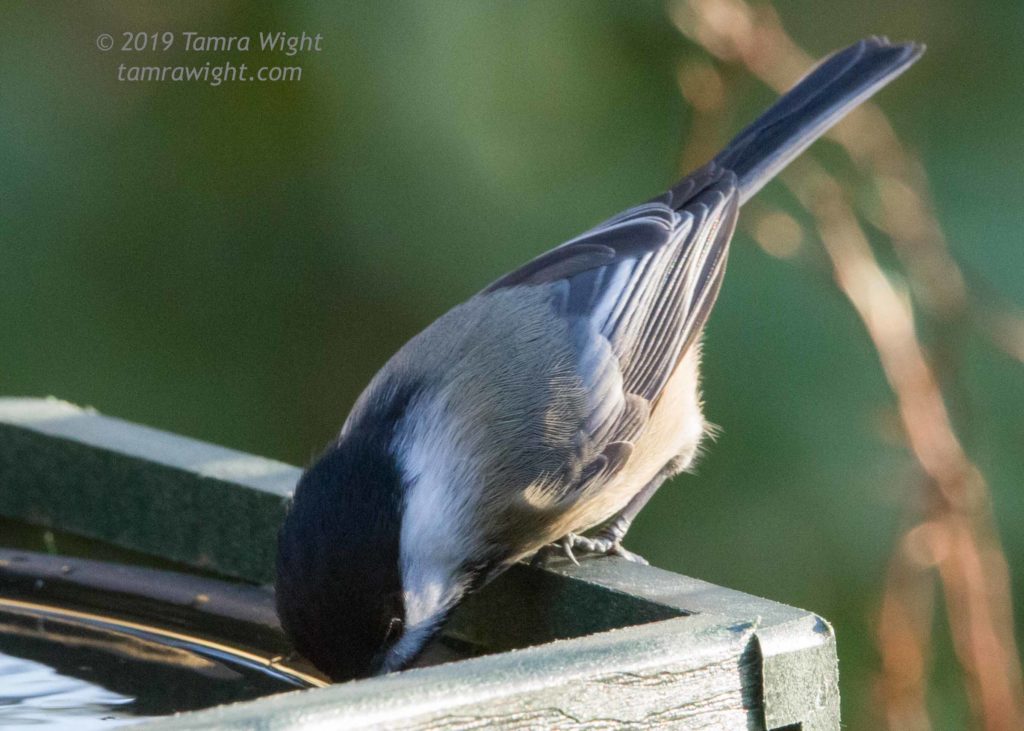
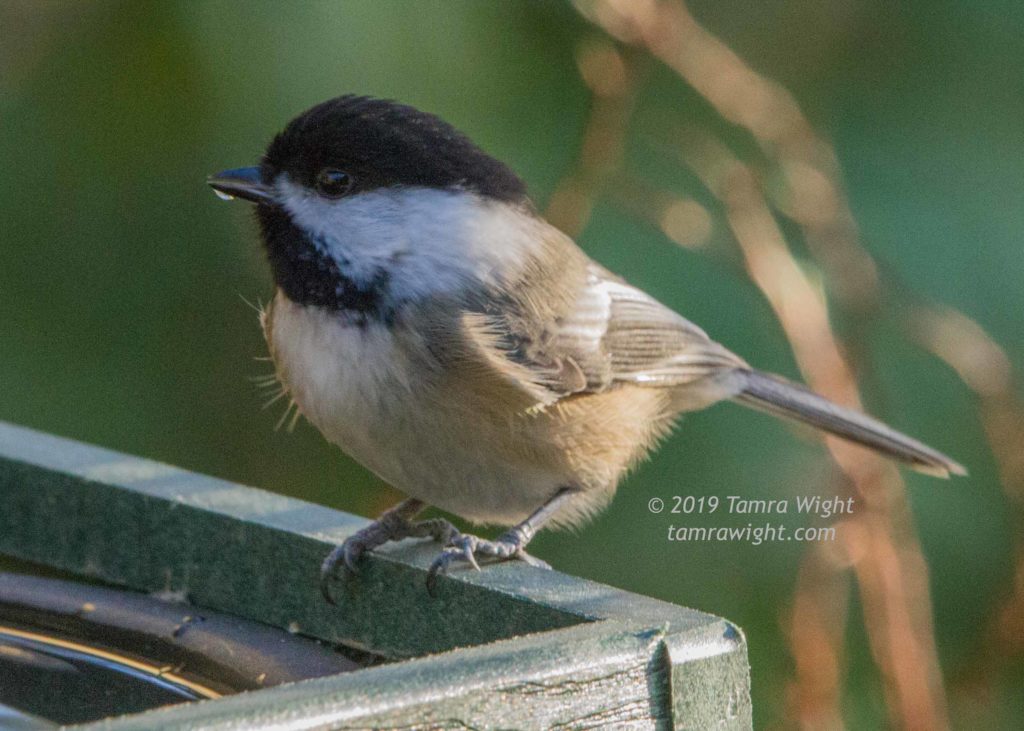
Once you’ve set up your feeder and bird bath, it could take a week or two before the birds find you. Have patience. Refill your water, and spread some seeds on the ground where they can see them from a distance. Trust me, they’ll come.
When your birds start to arrive, sit quietly, and watch their behavior. Birds who gather grasses, are probably nest building!
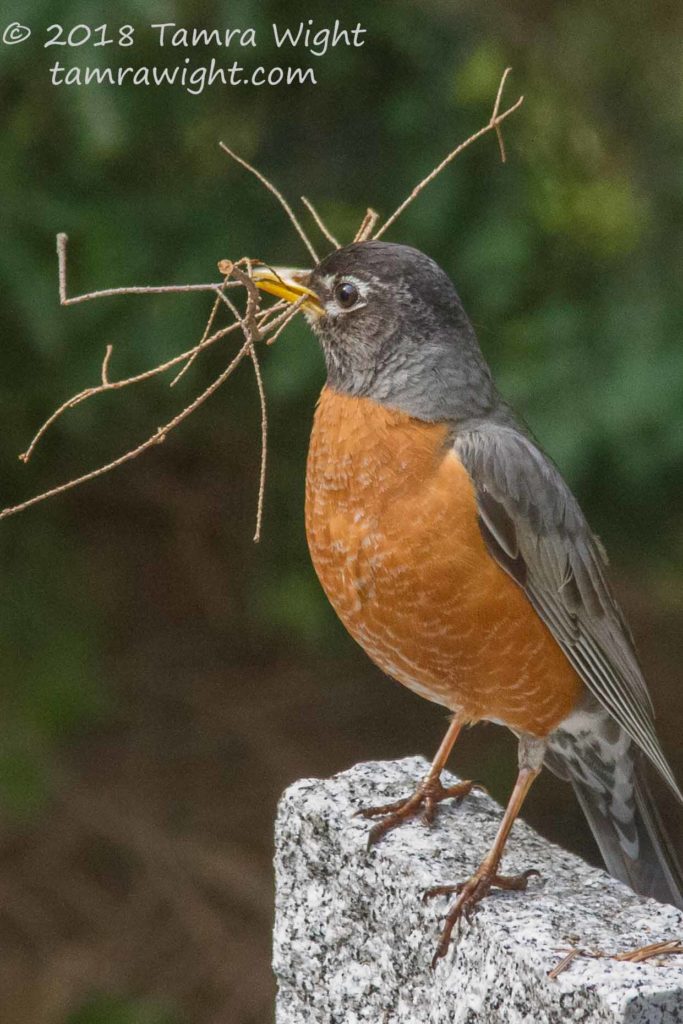
Do you have a dog or cat? When you brush them, save the hair from the brush and tuck it into a bush or branches of a tree. Birds will use it to line their nests.
Male Cardinals who want to attract a female cardinal, will feed them.
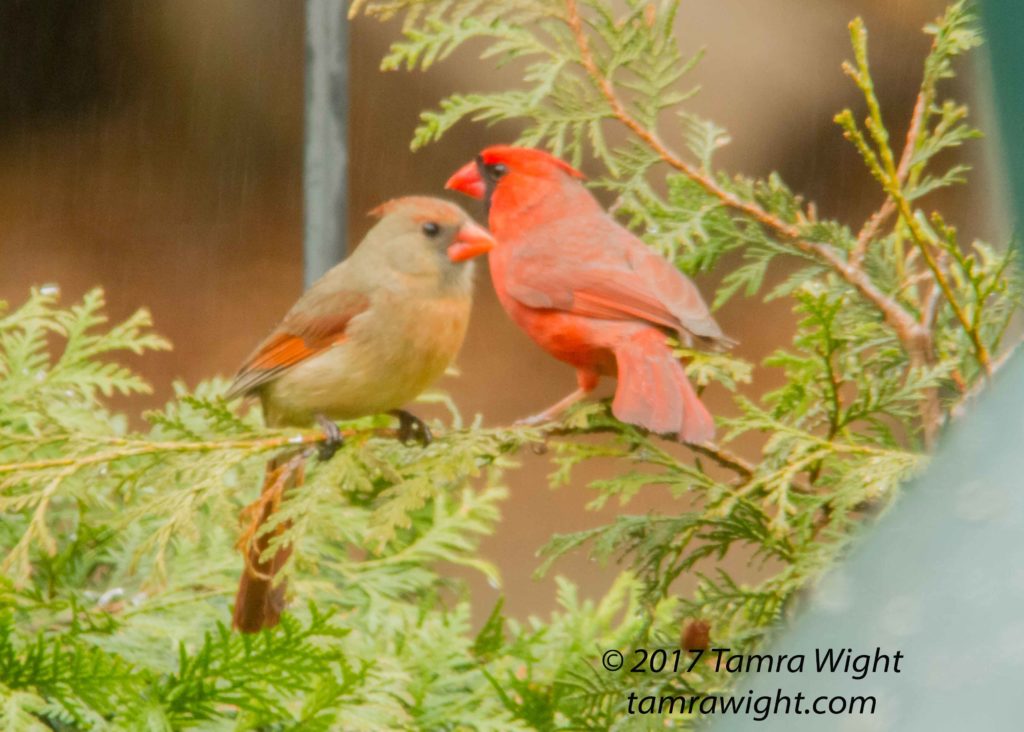
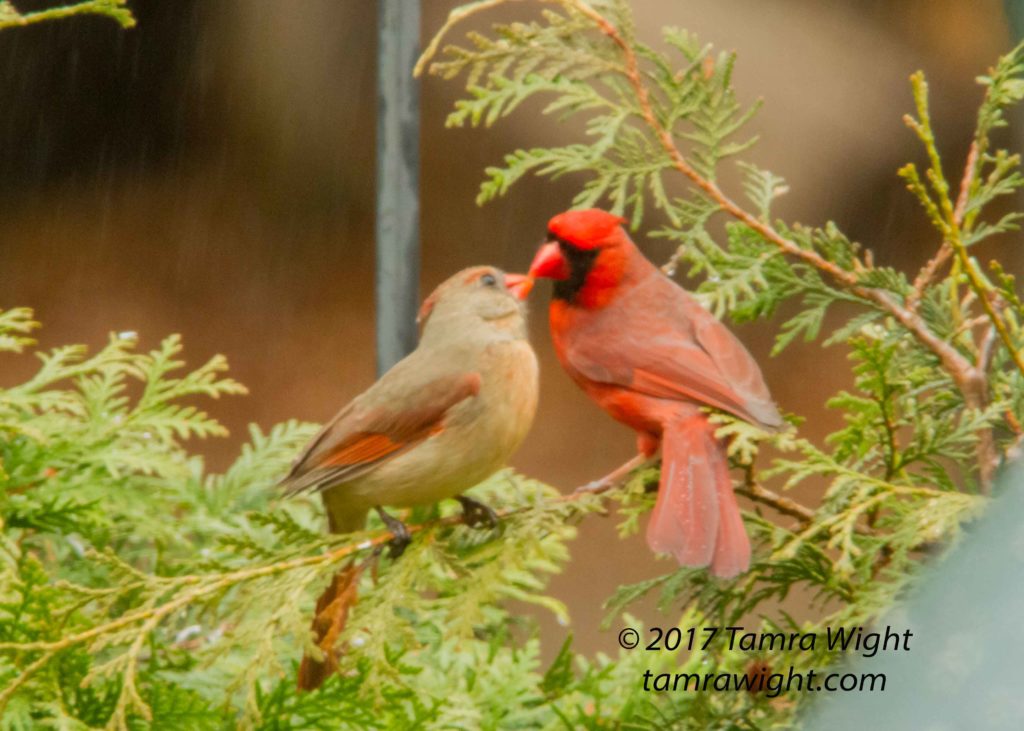
Parents will bring their chicks to your feeder to teach them how to find food. Or they might bring them to your bird bath to teach them how to groom themselves.
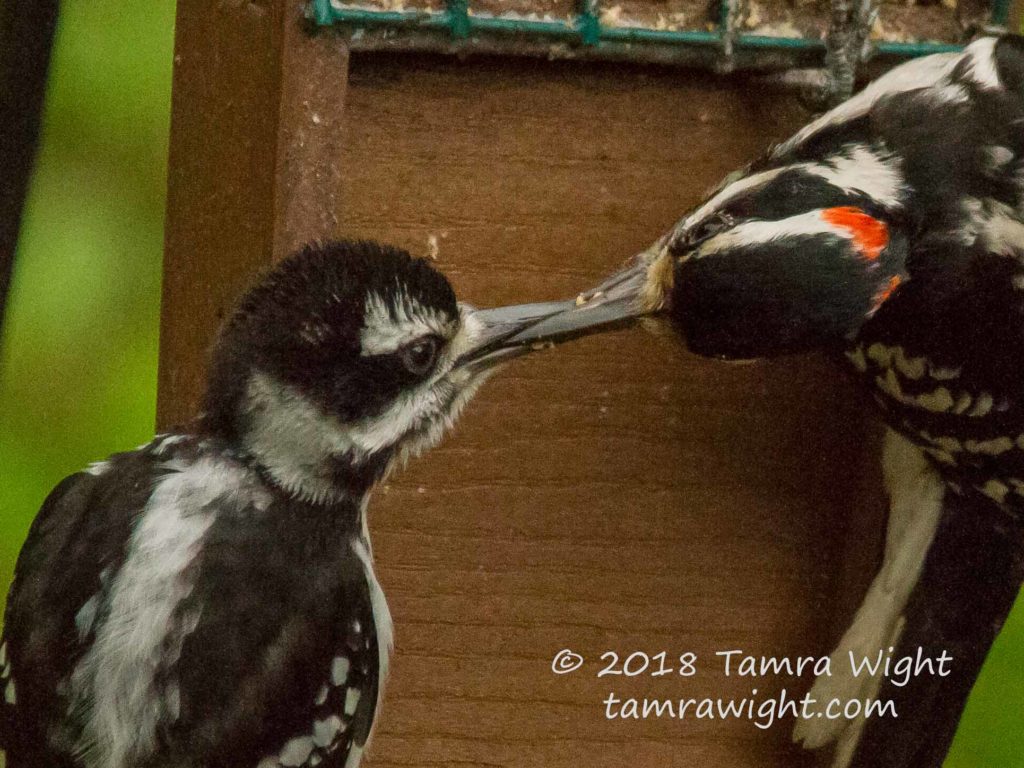
And the birds you see gathering insects in your backyard, might just be taking them back to their little ones in their nest.
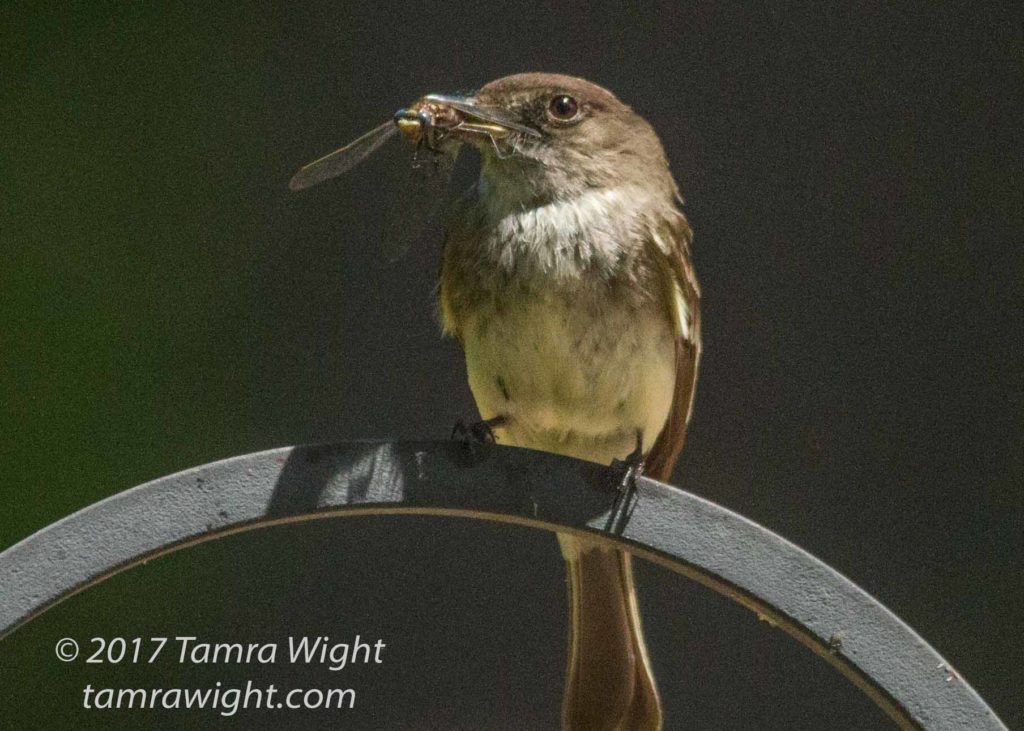
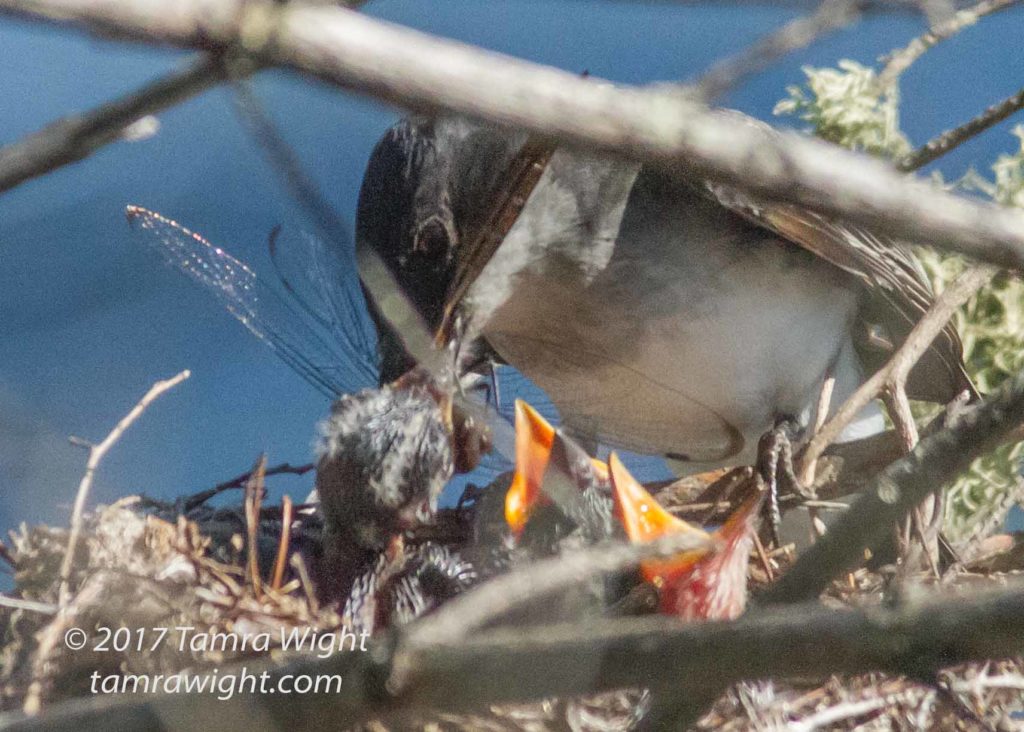
Being patient, and watching from a distance will help you to see more birds and their behavior.
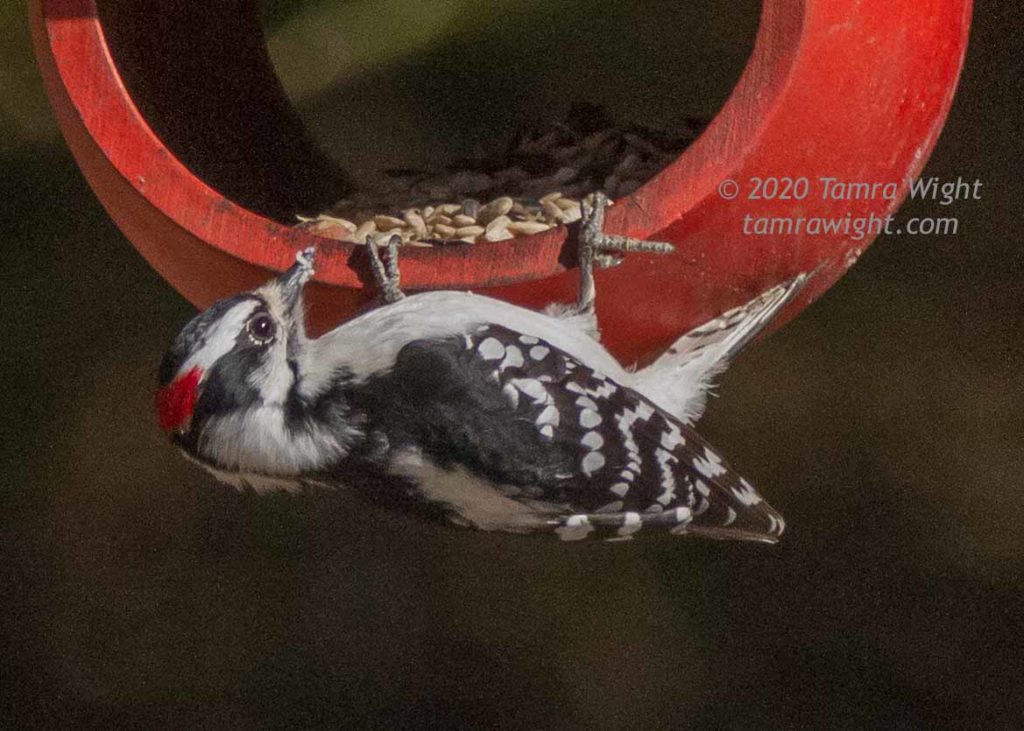
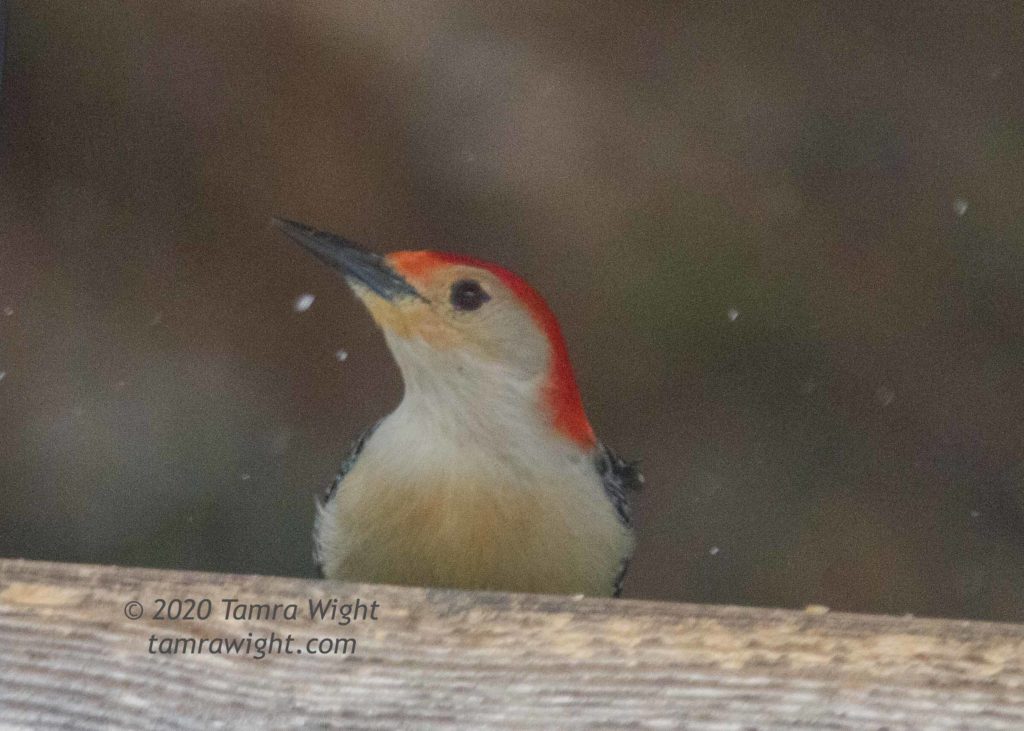
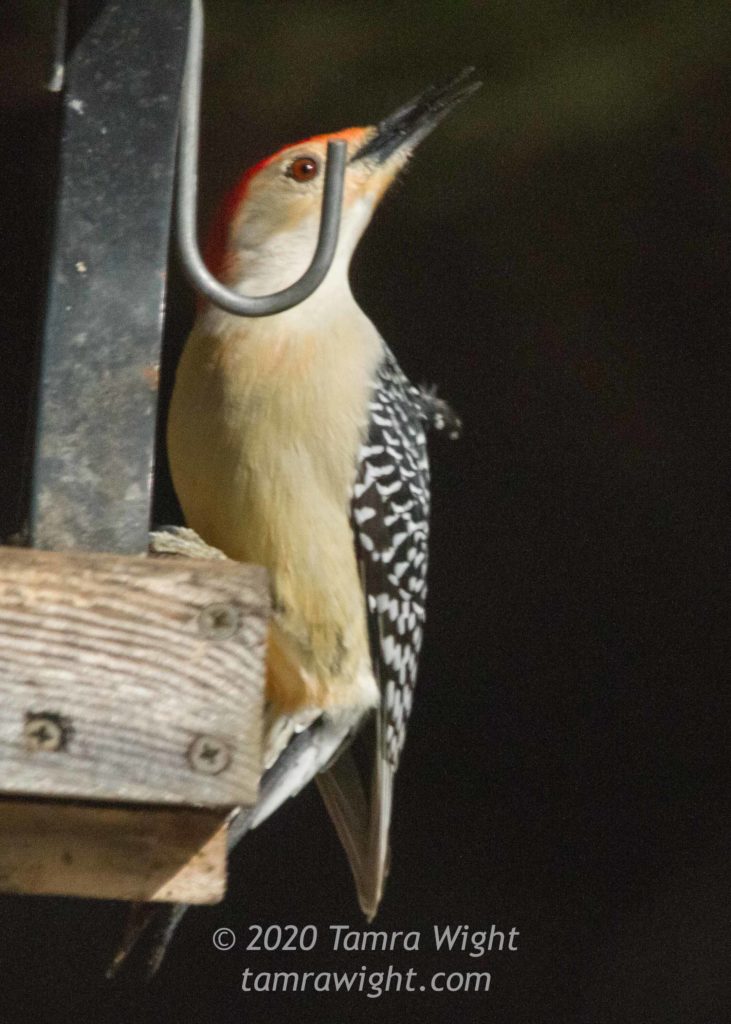
And don’t be surprised if you have non-bird visitors! They help to clean up the seed that’s fallen to the ground.
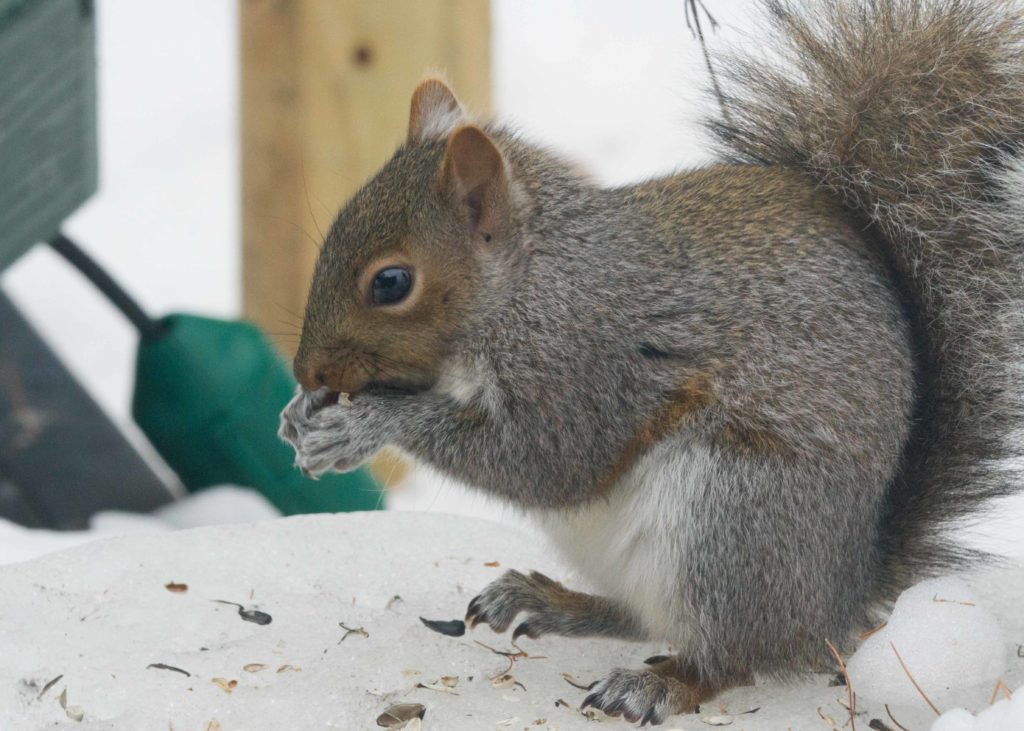
Get creative! Are you into photography? Find new ways to put out your seed for interesting photos.
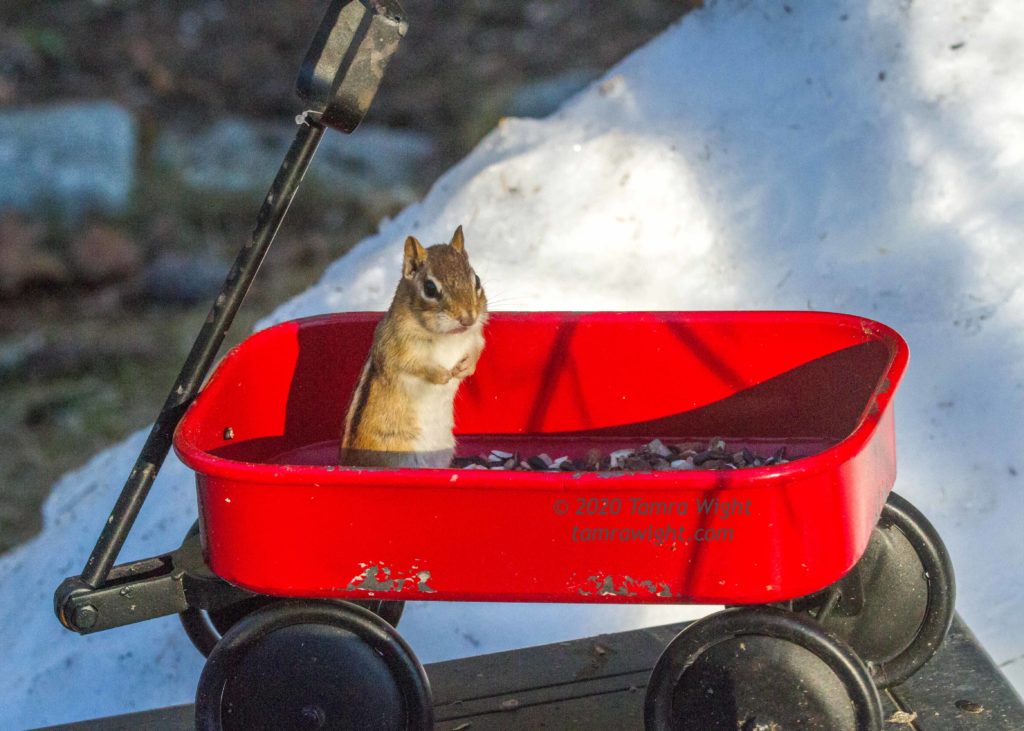
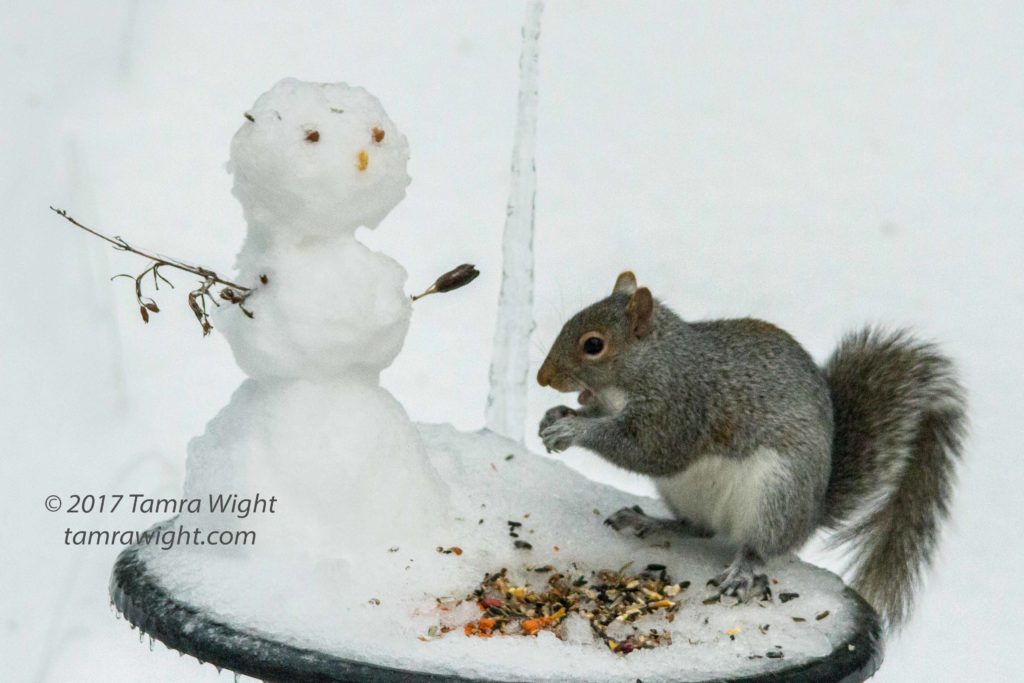
Here are a couple field guides to help you identify the birds coming and going in your backyard. Remember, males and females may look different, like with the cardinal picture above. And young birds will look different still. When you see them, quickly note the colors, where you saw it (on the ground, in a feeder) and what size it is.
The Audubon Guide to North American Birds
Keep a birding journal! New birds come and go at my feeder all the time. I’ve even had owl and hawks hang out every now and again. Keep a daily log of what you’ve seen and the time of day they appeared. Some things to look for, when do birds appear at your feeder? Chickadees come and go at mine all the time, but cardinals only eat from my feeder early, early morning and during the last light of the day.
Here’s a game to play while watching the birds come and go! Birdwatch Bingo! Try playing with a friend, each of your watching your own backyard habitats. Or play as a family – whoever spots the bird first, gets to mark it on their board.
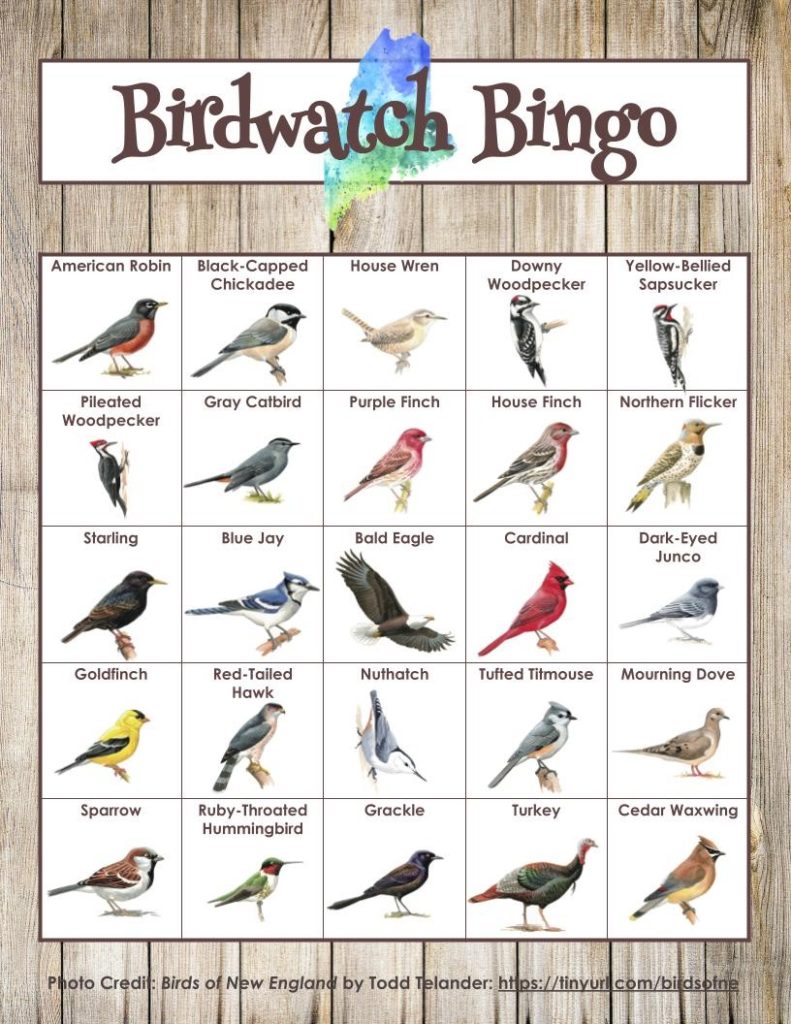
Happy bird watching! I’d love to hear the birds your seeing in your backyard, as all our migrating feathered friends begin to return. Drop me a note or a picture about one!
